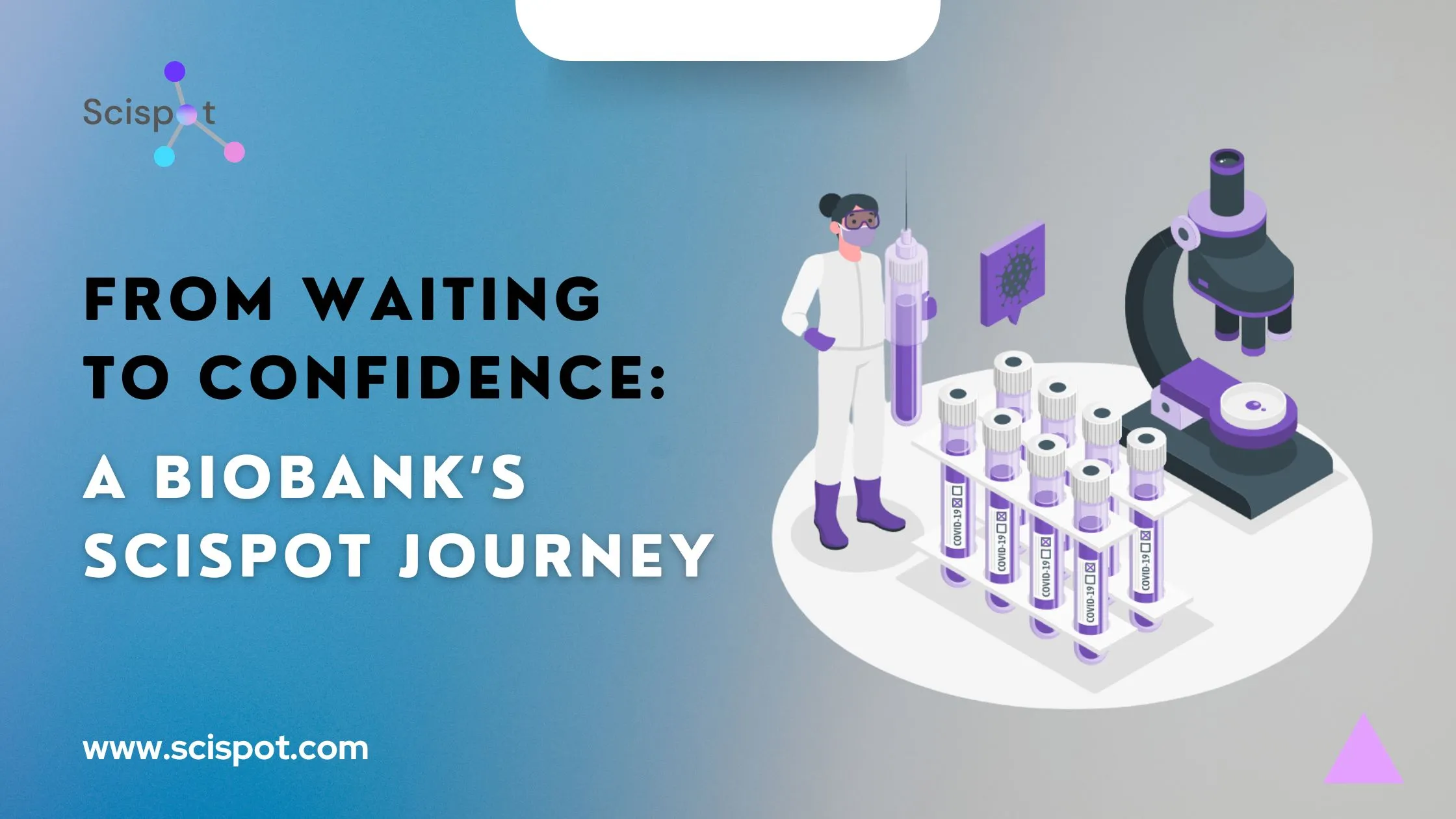In today’s labs, instrument data is everything. But what if you could take that data and transform it into something more? What if your instrument data could be connected directly to your samples and experiments—automatically?
That’s exactly what we’ve done at Scispot.
Here’s how you can harmonize and enrich your instrument data, build a connected data model, and finally land your lab’s data in the cloud.
1. Enriching Instrument Data with Samples and Experiments
In many labs, instrument data is collected, but it’s siloed. You’ve got mass spectrometry data in one place, PCR data in another, and experiment notes scattered across spreadsheets. This fragmentation is a huge barrier.
Scispot automatically enriches instrument data by linking it with sample metadata and experiment workflows. Whether it’s a chemical formulation or a sequencing run, your data is no longer isolated. It becomes part of a larger, connected model.
Why is this critical?
- Data integrity: Your data remains intact and connected to its origin, so no details get lost.
- Data enrichment: Adding context to your raw instrument output makes it useful for deeper analysis.
2. Harmonizing Instrument Data: The Secret to Efficiency
Harmonization is the process of aligning different types of data (from various instruments) into a standard format. Without harmonization, you’d be stuck manually cleaning and formatting your data, which takes weeks.
Scispot does this in minutes.
By bringing together data from multiple instruments—whether it’s a spectrometer, PCR machine, or chromatography system—Scispot creates a unified data structure. That means your lab can get from raw data to insights faster than ever.
No more manual formatting. Just clean, ready-to-analyze data.
3. Landing Your Instrument Data in the Cloud
Storing instrument data in the cloud means more than just moving files. It’s about creating a centralized hub where all your data—structured and unstructured—is instantly accessible to your entire team.
With Scispot, your instrument data is automatically landed in the cloud and connected with your experimental workflows. This gives you a comprehensive data lake for analysis, collaboration, and storage.
Why go cloud?
- Collaboration: Teams can access and contribute to data in real time.
- Security: Scispot ensures your data is compliant with the latest industry standards.
- Scalability: Need to add more instruments or samples? No problem. The system scales effortlessly.
4. Building a Data Model by Connecting Instruments, Samples, and Experiments
The ultimate goal is to take raw instrument data and transform it into a machine-readable data model. This enables AI-driven analysis, real-time collaboration, and smarter decision-making.
At Scispot, we’ve built a platform that acts as the connective tissue between your instruments, samples, and experiments. This means your computational biologists and wet lab scientists can finally speak the same language—one connected through your data.
Our platform uses small foundation models to predict and organize data from instruments based on your sample workflows. This makes it easy to model data, regardless of the complexity of your experiments or the type of instrument.
5. Why Scispot Is the Future of Lab Data
Our customers use Scispot to automatically harmonize instrument data, enrich it with sample and experiment context, and land everything in a secure cloud environment. This forms the backbone of their data lakes, empowering labs to move beyond fragmented systems and truly integrate their workflows.
You no longer have to leap between ELNs, LIMS, spreadsheets, and external analytics tools. With Scispot, everything is connected. You gain full visibility of your lab’s data, ensuring data integrity and efficiency at every step.
Conclusion: Ready to Transform Your Lab?
If you’re tired of dealing with disconnected data and manual processes, it’s time to adopt a next-gen LIMS that actually works as a data stack. Scispot is designed to help you harmonize your instrument data, enrich it with context, and land it in the cloud—ready for analysis, collaboration, and growth.
Let’s talk about how you can build the future of your lab.











